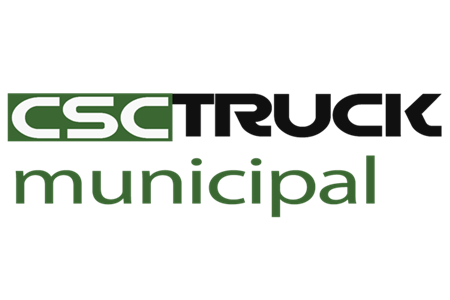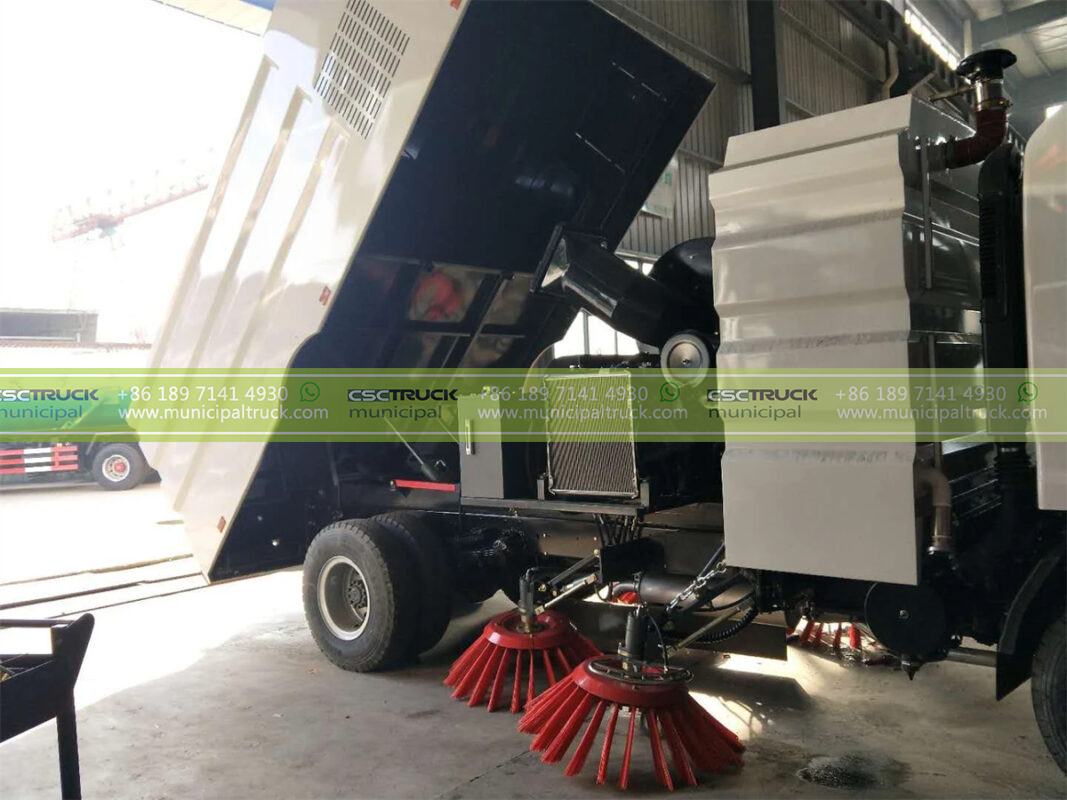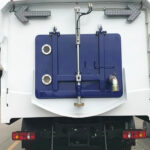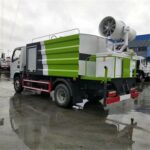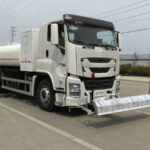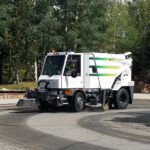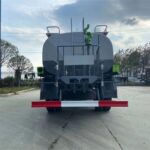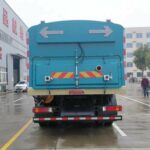Beneath the visible grime and debris littering our city streets lies a far more insidious threat: particulate matter measuring less than 2.5 micrometers in diameter, known as PM2.5, capable of penetrating deep into human lungs and even entering the bloodstream, contributing to a staggering global burden of respiratory illnesses, cardiovascular disease, and premature mortality. While industrial emissions and vehicular exhaust are often cited as primary culprits, the resuspension of road dust – a potent cocktail of tire wear, brake dust, soil, pollen, and accumulated pollutants – constitutes a major, yet frequently underestimated, contributor to urban PM2.5 levels. In this critical battle for cleaner urban air, the modern road sweeper truck has evolved far beyond its basic cleaning function, emerging as a sophisticated technological asset strategically deployed to mitigate this pervasive health hazard at its source.
The PM2.5 Problem: Urban Dust Resuspension as a Silent Health Emergency
The significance of road dust resuspension cannot be overstated. Vehicles constantly churn settled particles back into the air we breathe:
- Complex Composition: Urban road dust is a heterogeneous mix. It contains carcinogenic compounds like polycyclic aromatic hydrocarbons (PAHs) from exhaust, heavy metals (lead, cadmium, zinc) from brake linings and tire wear, allergenic particles like pollen and mold spores, and mineral dust. When agitated by traffic, wind, or construction, these particles become airborne PM2.5 and PM10.
- Persistent Source: Unlike smokestacks or tailpipes that can be regulated at the source, road dust is a diffuse, ongoing emission source. It accumulates continuously from diverse origins and is readily resuspended, making its management particularly challenging yet essential.
- Direct Health Impacts: The respiratory and cardiovascular burden linked to chronic PM2.5 exposure is well-documented by global health organizations (WHO, EPA). Reducing resuspended dust directly translates to lower ambient PM2.5 concentrations, offering tangible public health benefits for urban populations.
Beyond Cosmetic Cleaning: The Mechanics of Modern Dust Suppression Sweepers
Contemporary road sweeper trucks are engineered with advanced systems specifically designed to capture the finest, most hazardous particles before traffic can loft them into the breathable air column:
- High-Efficiency Regenerative Air Filtration: The core technology. Powerful fans generate an intense vacuum at the sweeper head, pulling dust-laden air into a multi-stage filtration pathway. This typically involves:
- Primary Separation: Larger debris falls directly into the hopper via gravity.
- Cyclonic Pre-Cleaning: Centrifugal forces separate heavier dust fractions.
- Advanced Final Filtration: High-efficiency particulate air (HEPA) or EPA-rated filters capture the critical PM2.5 and PM10 fraction. Crucially, a portion of the cleaned air is recirculated (“regenerated”) to the sweeper head, creating an air curtain barrier that helps contain dust at the pickup point, preventing its escape.
- Optimized Mechanical Action: While air systems handle fines, brushes (bristle, steel, or hybrid) effectively dislodge caked-on material and larger debris. Modern designs minimize unnecessary dust generation through precise brush-to-surface pressure control and optimized rotation speeds.
Subsection: Filtration – The Heart of PM2.5 Capture
The efficacy of a sweeper in combating PM2.5 hinges critically on its filtration system:
- Filter Media Evolution: Moving beyond traditional fabrics, modern sweepers utilize nanofiber composites and advanced synthetic media. These offer vastly superior capture efficiency for sub-micron particles (including PM2.5), higher dust-holding capacity, and lower airflow resistance, maintaining performance throughout the duty cycle.
- Automated Filter Cleaning: Sustained high efficiency requires keeping filters clear. Reverse-pulse air jet systems or mechanical shakers periodically dislodge accumulated dust cake from the filter media into the hopper, ensuring consistent suction power and filtration effectiveness without manual intervention.
- System Sealing and Monitoring: Robust sealing throughout the air path prevents leaks that bypass filtration. Onboard diagnostics and telematics can monitor filter differential pressure, providing real-time data to operators for proactive maintenance and ensuring the system operates at peak PM2.5 capture efficiency.
The Synergy of Sweeping and Spraying: Integrated Dust Control
While waterless technology excels, certain scenarios or legacy systems involve water for enhanced suppression. The most effective modern approaches often integrate capabilities:
- Targeted Spray Systems: Some advanced road sweeper trucks incorporate precision spray bars or nozzle arrays, often using atomized mist rather than coarse water jets. This fine mist is applied directly at the point of broom contact or suction, weighing down dust particles just long enough for the powerful vacuum system to capture them. The key is minimal, targeted application.
- Dust Suppressant Integration: Beyond plain water, specialized dust suppressants (non-toxic, biodegradable polymers or hygroscopic salts) can be sprayed. These act as binding agents, agglomerating fine particles into larger clumps that are less prone to resuspension and easier for the sweeper to capture, providing longer-lasting suppression after the sweeper has passed.
- Reducing Overall Water Use: Modern integrated systems use significantly less water than older generations by combining precise application with high-efficiency mechanical and vacuum collection. Some can even utilize tankered non-potable water or treated effluent, conserving valuable drinking water resources.
Operational Strategies: Maximizing PM2.5 Reduction Impact
Deploying the technology effectively requires strategic planning and execution:
- Frequency and Timing: High-frequency sweeping on key arterial roads, near sensitive receptors (schools, hospitals), and in high-traffic corridors is critical. Early morning or late-night operation minimizes interference with traffic and maximizes capture before daily resuspension cycles begin.
- Route Optimization: Utilizing GIS mapping and air quality monitoring data allows municipalities to prioritize sweeping in areas with highest dust accumulation and poorest air quality, ensuring resources target the most significant PM2.5 sources.
- Surface Conditions: Effectiveness varies. Sweeping is most efficient on smooth, impervious surfaces (asphalt, concrete). Performance on porous surfaces (bricks, gravel) requires adjusted techniques and expectations. Addressing “fugitive dust” sources from construction sites or unpaved areas often requires complementary measures alongside sweeping.
- Performance Verification: Employing particle counters before and after sweeping passes provides quantitative data on PM2.5 reduction efficacy, allowing for continuous improvement of routes, techniques, and technology choices.
Overcoming Barriers: Fleet Transition and Perception Shifts
Adopting high-efficiency sweeping as an air quality tool involves challenges:
- Capital Investment: Advanced sweepers with superior filtration represent a significant upfront cost compared to basic models. Demonstrating the long-term operational savings (reduced water use, lower filter replacement frequency if managed well, fewer health-related societal costs) and securing funding through environmental grants or public health budgets is crucial.
- Maintenance Expertise: Sophisticated filtration and control systems demand trained technicians and consistent maintenance protocols. Municipalities need robust service plans and operator training to maximize machine lifespan and sustained PM2.5 capture performance.
- Shifting the Narrative: Moving the perception of sweeping from a purely aesthetic/cosmetic service to a validated public health intervention requires consistent communication of the science linking road dust to PM2.5 and the proven efficacy of modern sweepers in reducing it. Data transparency is key.
The Future Horizon: Smarter, Cleaner, More Connected Sweeping
Innovation continues to enhance the sweeper’s role in urban air quality management:
- Precision Sweeping with AI & Sensors: Integration of onboard sensors (optical particle counters, LiDAR for debris mapping) combined with artificial intelligence will enable real-time adjustment of sweeping parameters (suction power, brush speed, spray rate) based on actual dust levels detected, optimizing PM2.5 capture and resource use for each specific street segment.
- Zero-Emission Propulsion: The convergence with battery-electric (BEV) and hydrogen fuel cell powertrains eliminates tailpipe emissions from the sweeper itself, amplifying its net air quality benefits. Quiet electric operation also allows for expanded cleaning windows in noise-sensitive areas.
- Integrated Urban Air Quality Networks: Sweepers equipped with advanced sensors become mobile monitoring platforms, feeding real-time, hyper-local air quality data into city-wide networks. This data can dynamically adjust sweeping schedules and inform broader pollution control strategies.
- Advanced Material Science: Ongoing research into ultra-low wear brooms and self-regenerating filter surfaces promises further reductions in operational costs and environmental footprint while maintaining peak PM2.5 capture efficiency.
The image of a modern street sweeper truck, humming efficiently along a curbside, now represents far more than urban tidiness; it embodies a critical, technologically advanced intervention in the complex challenge of urban air pollution. By preventing the dangerous resuspension of PM2.5-laden dust, these machines work silently but effectively to safeguard public health where people live and breathe. Alongside specialized equipment like the targeted sprayer truck used for applying suppressants on construction sites or unpaved roads, the contemporary road sweeper truck stands as a testament to how essential municipal services are evolving, integrating sophisticated engineering and environmental science to create healthier, more resilient cities for the future. Their contribution to cleaner air, though often unseen in the particles they remove, is a vital investment in the wellbeing of every urban resident.
